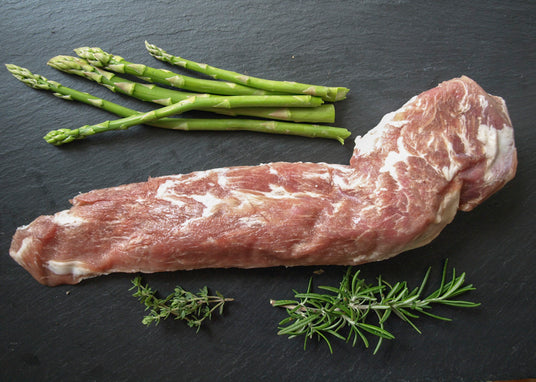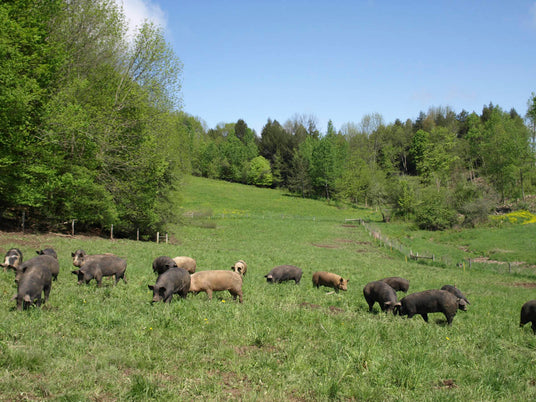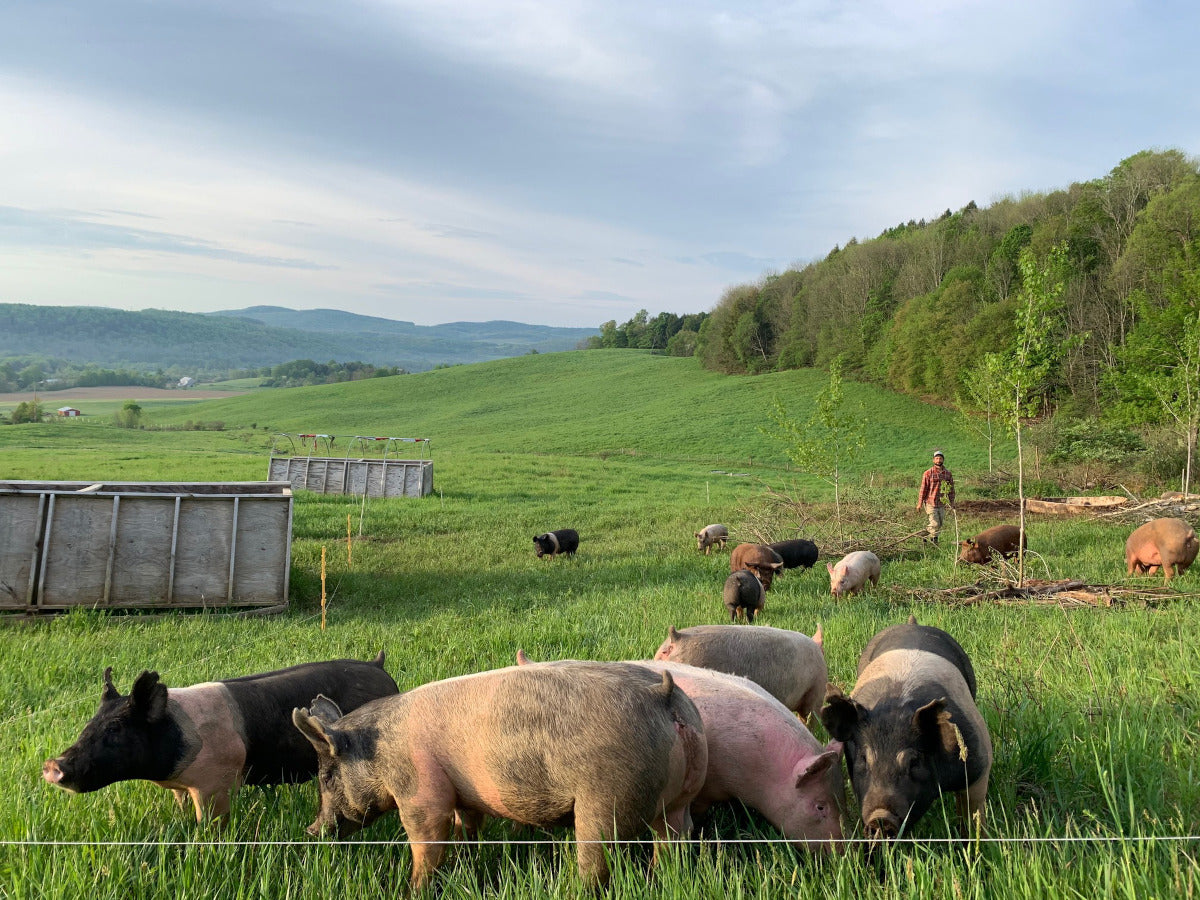
The Other Side of the Coin
It's no coincidence that good journalism led to the unraveling of Theranos and that good journalism has laid bare some of the challenges commonly left out of the lab grown meat narrative. For what follows I am primarily using an article by Tom Philpott about the repeated failure of lab grown meat companies to meet their targets and especially this thorough piece by Joe Fessler in The Counter about the technical challenges of scaling lab grown meat. I'll do my best to summarize the major points of the articles, but they are both well worth reading in their entirety. (As I've been working on this page Dave at Wrong Direction Farm has written up a nice summary of second of these.)
Philpott's piece makes the straightforward point - and lays out in a compelling chart - that companies and research institutes have for years been making optimistic claims about when lab grown meat would hit stores. Many of these predicted dates have already passed, while many others look certain to, with no company showing signs of having a commercially viable product. Joe Fassler goes deep on the reasons why this is the case.

The Nitty Gritty
A cow is an honest beast. Give it grass, a herd, water, and clean air, and will contentedly grow and fatten. But this apparent simplicity belies an intricate biological complexity, as its four chambered stomach works to convert cellulose - indigestible even to many other herbivores - into useable calories, and then to use those calories to build bone, skin, fat, and muscle.
Lab grown meat seeks to remove the last of these from the animal and place it in the factory. The appeal is obvious. If the meat is the valuable part of the animal, why not figure out a way to produce more of it and less of the other stuff? Indeed, breeding livestock takes this into consideration, with animals selected for weight gain and even the size of particular muscles, such as loin eye area in sheep. But lab grown meat would go much further, throwing out all the extraneous, energy using tissue such as bone, brain, and skin, and only make the muscle.
But it turns out that even one tissue type, grown in isolation, has tremendous complexity. It takes a symphony of hormones, nutrients, and stimuli for muscle cells to grow properly. In the context of a cow these arrive as a matter of course; a cow's body knows how to properly grow beef. But when muscle cells are removed from their natural context, it falls on humans to provide stimulants, amino acids, and everything else the muscle needs in the right time and quantity, to remove the waste products generated by the growing muscle tissue, and to do it all in an almost inconceivably sterile environment.

A Fork in the Road
The problems lab grown meat seeks to address are real. Farming generally and industrial animal agriculture in particular do contribute to deforestation and other environmental issues. An unconscionable amount of animal suffering is tolerated in the pursuit of cheap meat. Meanwhile, with an increasing and increasingly affluent global population, the demand for meat will continue to rise for the foreseeable future.
Exactly how we manage this situation is one of the great questions of our time. The appeal of lab grown meat is that it slots nicely into our established narrative of how technological fixes go about solving such issues, with a novel, streamlined industrial process arriving just in time to avert a shortfall. But if this promise, however earnestly made, rests on a faulty premise - if affordable lab grown meat simply isn't in the cards - then we need to start seriously pursuing alternatives.
Vegetarians and their allies propose government funding of lab grown meat, or taxing meat. Apart from the fact that such proposals are unlikely to get much traction amongst a public that overwhelmingly enjoys meat, if you believe, as I do, that meat is singularly healthy, then a tax on it would amount to further separating those wealthy enough to consume it regularly from those not.
Is it more realistic to attempt to scale up the production of humane grass fed and pastured meats, to stop feeding grain to cows, to make sure that the grain fed to chickens and pigs comes from farms that employ sound environmental practices? Is it possible to do this on a large enough scale to feed the world without further degrading the few relatively pristine environments that still exist?
I wish I could confidently answer yes to these questions. I cannot. But I do know that incrementally working towards such goals, however daunting a prospect it might be, would also incrementally improve the world. I'm not saying all research into lab grown meat should cease. If it can be produced cheaply enough and people want it, I don't see how it's any worse than industrially produced chicken. But it should hardly be an afterthought as we decide where to focus our hopes and our resources when it comes to building a better food system.

Finally, a Word about Cows
TFor this post I've focused mainly on the theoretical practicalities and impracticalities of lab grown meat. But there's a fundamental part of the question that can be overlooked in such a discussion: would it actually be better to raise beef outside of cows, even if we could? The premise of lab grown meat is that livestock are always bad for the land, and that raising them for food requires them to suffer so much that it would be better for them not to exist in the first place.
While I won't go into all the details about why I find this view to be misguided - I've written about why I support eating meat at some length if you're interested - but to put it briefly, I think a world with cows could be better than a world without them, that a world with farms could be better than a world without them, and that because of this we should try to figure out how to move towards that world, rather than passively waiting for a lab grown utopia to arrive in our supermarket.


